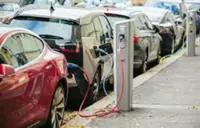Lee: With EV cars generally being priced at a minimum of RM150,000, there is insufficient volume to drive up the sector.
ELECTRIC vehicles, or EVs in short, are the buzzword the world over. Locally, a growing number of listed companies have announced plans to get involved in the sector (see sidebar). Some are looking at building charging points, while others intend to distribute imported EVs in the Malaysian market.
There are also listed companies indirectly involved in the sector via manufacturing components for EVs.
Already a subscriber? Log in
Save 30% OFF The Star Digital Access
Cancel anytime. Ad-free. Unlimited access with perks.





